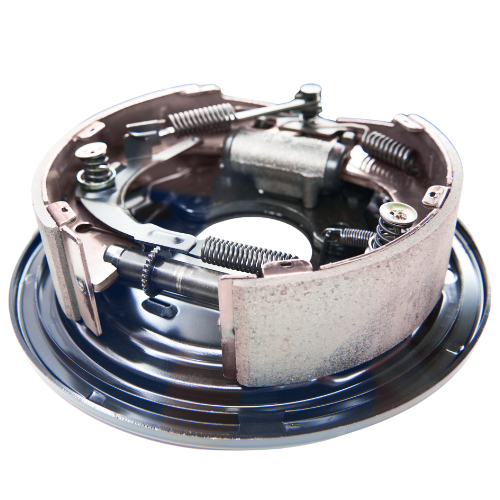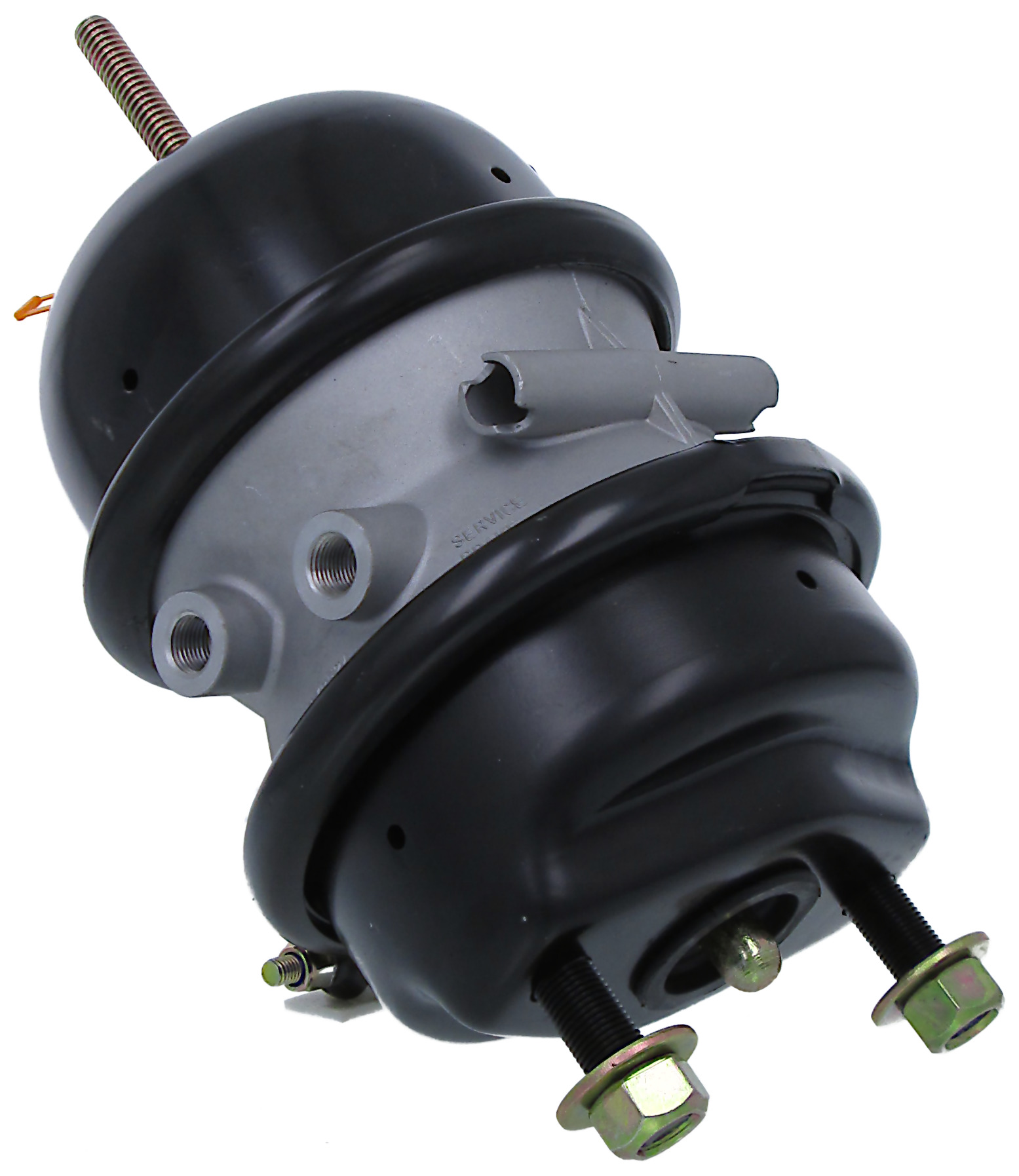Explore the four key components that make up a truck’s brake system—engineered to ensure safe, reliable, and powerful stopping performance on every road.

The foundation of safety and efficiency in heavy commercial transport rests entirely on components that can deliver unwavering performance under extreme duress. Within the complex architecture of a commercial vehicle's braking system, the brake chamber is the essential actuator. This device converts the potential energy of compressed air, which serves as the pneumatic signal and then turn it into the necessary mechanical force to engage the foundation brakes, reliably bringing heavy loads to a stop. Its design is inherently rigorous, demanding resilience against millions of operational cycles, wide thermal shifts, corrosive road salt, and environmental contamination. The operational integrity of a truck's air brakes system is fundamentally dependent on the enduring reliability of the brake chamber assembly.

The primary function of a commercial brake chamber is to convert the high pressure of stored compressed air into the powerful linear movement required to apply the foundation brakes. This critical component is commonly found in dual configurations, often referred to as "piggyback" units, which expertly manage two distinct yet interdependent braking requirements:
In the service section, when the driver commands a stop, compressed air rushes into the chamber, exerting force across the diaphragm's surface area. The resulting force drives a pushrod outward, transmitting proportionate power to the rest of the foundation brake components. The force generated is mathematically precise, being directly proportional to the air pressure and the diaphragm's area, thereby ensuring highly predictable and controlled stopping power.
The spring brake section, on the other hand, operates using stored mechanical potential energy. While the vehicle is running, this massive spring is held in a compressed state by constant system air pressure. Activating the parking brake or experiencing a critical air pressure drop causes the retaining air to be deliberately vented. The rapid, forceful expansion of the spring mechanically locks the wheels. The enduring strength and reliability of this spring mechanism are absolutely vital for guaranteeing emergency stopping capability and securing the vehicle when stationary.
The environment in which a brake chamber operates subjects its internal components to relentless stress, leading to material fatigue. The ability of the chamber to maintain its integrity over a long service life is a direct result of the advanced materials utilized in its construction and manufacturing. Two key components face the most severe mechanical and environmental challenges:
The diaphragm's durability is non-negotiable. Typically fabricated from highly advanced synthetic rubber compounds, it is engineered to offer superior resistance to environmental degradation. Failure of this part, often due to a tear or embrittlement, mandates immediate brake chamber replacement as it results in a sudden and total loss of pneumatic force delivery at that wheel end.
Similarly, the main spring's material excellence is paramount. It undergoes meticulous heat-treating processes to ensure its shape memory remains intact, guaranteeing that its initial, specified emergency braking force never diminishes throughout the component's lifetime. Furthermore, the exterior casing of the chamber must be protected against the aggressive elements of road conditions—road grime, moisture, and road salt. Durable, advanced corrosion-resistant coatings must be applied to the steel housing to prevent rust, which could otherwise compromise the casing structure, or cause internal components to bind and fail mechanically.
For the pneumatic force generated by the brake chamber to translate into effective stopping power, the brake mechanism’s running clearance must remain perfectly optimized. As the vehicle's materials that ensures friction, which is the brake shoes or pads, undergo wear, the distance the pushrod must travel before engagement increases. This condition, known as brake ‘slack,’ must be continuously managed by the slack adjuster.
The reliable function of this adjuster is critical for maintaining consistent performance across the fleet. Poor or insufficient adjustment, whether due to a failed component or improper maintenance, leads to several unsafe operational outcomes:
The vast majority of modern commercial vehicles rely on the automatic semi truck slack adjuster. This sophisticated device is precisely engineered to sense the operational stroke length of the pushrod during every brake application. If the stroke exceeds a calibrated limit, the internal mechanism engages, minimally rotating the S-camshaft. This action effectively takes up the excess slack, ensuring the pushrod only travels the minimum necessary distance to initiate effective braking, thereby minimizing response delay and preserving the designed braking force. This consistent, automated compensation for wear is fundamental to the overall safety and efficiency of the air brakes system.
Once the pushrod is extended by the chamber, the mechanical force must be efficiently transferred to the friction material to halt the wheel's rotation. This delivery process varies depending on the type of foundation brake system installed on the vehicle:
In drum brake setups, the S-camshaft acts as the primary mechanical multiplier, translating linear motion into expansive force. The integrity of the S-cam's bearings and bushings is crucial, as they absorb and redistribute considerable concentrated pressure.
Air disc brake calipers, however, are increasingly prevalent due to their inherent advantages in heat dissipation and simplified maintenance. Here, the brake chamber is often integrated or linked directly to the heavy duty brake calipers. This design provides a more direct and immediate application of force, making it the preferred choice for the most demanding applications and high-performance requirements specified by truck brake calipers manufacturers.
GAPASA is dedicated to upholding the highest standards of operational integrity and safety for commercial vehicle fleets by supplying replacement parts engineered for maximum dependability. The company recognizes that the constant, punishing operational stress placed on every air brakes component requires a level of quality that meets or surpasses stringent Original Equipment standards. GAPASA’s commitment is to ensure that essential vehicle functions remain reliable throughout the component's service life.
The extensive product range specifically addresses the demands of the air brakes system's most critical components:
By focusing on quality and providing comprehensive system coverage—from the initial air signal generation through the full chain of mechanical force delivery—GAPASA supports fleet operators in maintaining peak safety and operational efficiency. Investing in superior replacement parts ensures that the essential conversion of pneumatic energy into stopping force is executed flawlessly, cycle after cycle, regardless of road conditions or vehicle demands.
The brake chamber is far more than a simple actuator; it is a meticulously engineered component that fundamentally guarantees vehicle control and operational efficiency. Its remarkable endurance is a direct result of the quality of its construction, particularly the chemical resilience of its diaphragm, the unwavering power of its main spring, and its essential functional synergy with components like the slack adjuster. As both vehicle weights and service demands continue to increase across the logistics and transportation industries, the reliance on certified, high-quality components for brake chamber replacement and overall system maintenance becomes non-negotiable. Only by insisting on premium parts can operators be fully certain that the immense force generated pneumatically is translated into reliable, effective friction when it matters most.